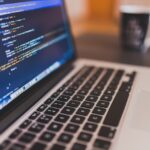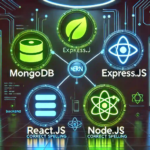In the world of data science, NumPy and Pandas are two of the most essential Python libraries. They form the backbone of data manipulation, analysis, and preprocessing, making them critical tools for any data scientist. If you’re preparing for a data science interview, you can expect a variety of questions focused on NumPy and Pandas. This article provides a detailed guide to help you ace these questions, covering everything from basic concepts to advanced techniques.
1. Introduction
NumPy and Pandas are indispensable tools for data scientists. NumPy, short for Numerical Python, is a library designed for efficient numerical computations. It provides support for arrays, matrices, and mathematical functions, making it ideal for handling large datasets. Pandas, on the other hand, is built on top of NumPy and is specifically designed for data manipulation and analysis. It introduces DataFrames and Series, which simplify working with structured data.
In data science interviews, employers often test candidates on their ability to use NumPy and Pandas effectively. Whether you’re a beginner or an experienced professional, mastering these libraries is crucial for showcasing your data science skills. This article will walk you through common interview questions, practical coding problems, and tips to help you prepare.
2. NumPy Interview Questions
2.1 Basics of NumPy
- What is NumPy, and why is it used?
NumPy is a Python library that provides support for arrays, matrices, and mathematical operations. It is widely used in data science because of its efficiency in handling large datasets and performing complex computations. - Difference between NumPy arrays and Python lists:
NumPy arrays are faster and more memory-efficient than Python lists. They also support vectorized operations, which allow you to perform calculations on entire arrays without loops. - How to create a NumPy array:
You can create a NumPy array using thenp.array()function. For example:
import numpy as np
arr = np.array([1, 2, 3])2.2 Array Operations
How to perform element-wise operations in NumPy:
NumPy allows you to perform operations like addition, subtraction, and multiplication on entire arrays. For example:
arr1 = np.array([1, 2, 3])
arr2 = np.array([4, 5, 6])
result = arr1 + arr2 # Output: [5, 7, 9]Explain broadcasting in NumPy:
Broadcasting is a feature that allows NumPy to perform operations on arrays of different shapes. For example, you can add a scalar value to an array:
arr = np.array([1, 2, 3])
result = arr + 5 # Output: [6, 7, 8]How to reshape and flatten a NumPy array:
You can reshape an array using the reshape() method and flatten it using the flatten() method:
arr = np.array([[1, 2], [3, 4]])
reshaped = arr.reshape(1, 4) # Output: [[1, 2, 3, 4]]
flattened = arr.flatten() # Output: [1, 2, 3, 4]2.3 Advanced NumPy Concepts
- What are universal functions (ufuncs) in NumPy?
Ufuncs are functions that operate on arrays in an element-wise manner. Examples includenp.sin(),np.cos(), andnp.exp(). - How to handle missing data in NumPy arrays:
NumPy provides thenp.nanvalue to represent missing data. You can use functions likenp.isnan()to identify missing values. - Explain slicing, indexing, and masking in NumPy:
Slicing allows you to extract portions of an array, indexing lets you access specific elements, and masking enables you to filter data based on conditions.
2.4 Performance and Memory Management
- Why is NumPy faster than traditional Python lists?
NumPy arrays are stored in contiguous memory blocks, which makes them faster to access and manipulate. They also use optimized C and Fortran libraries for computations. - How to optimize memory usage in NumPy:
You can use thedtypeparameter to specify the data type of an array, reducing memory usage. For example:
arr = np.array([1, 2, 3], dtype=np.int8)3. Pandas Interview Questions
3.1 Basics of Pandas
- What is Pandas, and why is it used?
Pandas is a Python library designed for data manipulation and analysis. It introduces DataFrames and Series, which make it easier to work with structured data. - Difference between Pandas Series and DataFrame:
A Series is a one-dimensional array, while a DataFrame is a two-dimensional table. A DataFrame is essentially a collection of Series. - How to create a DataFrame in Pandas:
You can create a DataFrame using thepd.DataFrame()function:
import pandas as pd
data = {'Name': ['Alice', 'Bob'], 'Age': [25, 30]}
df = pd.DataFrame(data)3.2 Data Manipulation
- How to filter, sort, and group data in Pandas:
You can filter data using boolean indexing, sort data using thesort_values()method, and group data using thegroupby()method. - Explain merging, joining, and concatenating DataFrames:
Merging combines DataFrames based on a common column, joining aligns DataFrames based on their indices, and concatenation stacks DataFrames vertically or horizontally. - How to handle missing data in Pandas:
You can use thedropna()method to remove missing values or thefillna()method to replace them.
3.3 Data Analysis
- How to perform descriptive statistics using Pandas:
Pandas provides methods likedescribe(),mean(), andsum()for calculating descriptive statistics. - Explain the use of
apply(),map(), andapplymap()functions:apply()applies a function to a DataFrame or Series,map()applies a function to each element of a Series, andapplymap()applies a function to each element of a DataFrame. - How to work with datetime data in Pandas:
Pandas provides theto_datetime()function to convert strings to datetime objects and methods likeresample()for time-based operations.
3.4 Advanced Pandas Concepts
- What is MultiIndex in Pandas?
MultiIndex allows you to create hierarchical indices for DataFrames, enabling more complex data structures. - How to optimize performance in Pandas:
You can use techniques like vectorized operations and efficient data types to improve performance. - Explain the use of
pivot_table()andmelt()functions:pivot_table()creates a summary table, whilemelt()transforms wide-format data into long-format data.
4. Combined NumPy and Pandas Questions
- How to convert a NumPy array to a Pandas DataFrame and vice versa:
You can convert a NumPy array to a DataFrame usingpd.DataFrame()and a DataFrame to a NumPy array using the.valuesattribute. - Explain the integration of NumPy and Pandas in data analysis workflows:
NumPy is often used for numerical computations, while Pandas is used for data manipulation. Together, they form a powerful toolkit for data scientists. - How to handle large datasets using NumPy and Pandas efficiently:
Techniques like chunking, memory mapping, and using efficient data types can help manage large datasets.
5. Practical Coding Problems
- NumPy Coding Problems:
Practice creating arrays, performing operations, and solving mathematical problems. - Pandas Coding Problems:
Work with real-world datasets, perform data cleaning, and analyze data. - Combined Problems:
Solve problems that require both NumPy and Pandas, such as merging datasets and performing statistical analysis.
6. Tips for Answering NumPy and Pandas Interview Questions
- Understand the basics thoroughly.
- Practice coding problems on platforms like LeetCode or HackerRank.
- Be prepared to explain your thought process during coding challenges.
- Highlight real-world applications of NumPy and Pandas in your answers.
7. Conclusion
Mastering NumPy and Pandas is essential for any data scientist. These libraries are not only powerful but also widely used in the industry. By preparing thoroughly and practicing regularly, you can confidently tackle any interview question related to NumPy and Pandas.




